Suchergebnisse für "Factsheet%3A Energietechnologien gestalten%2C die f%C3%BCr alle sinnvoll und nutzbar sind"
F4WM - Fit4WienerMission
Preparation for the EU Urban Mission by updating goals and strategies (Smart City Wien Framework strategy, Climate-Roadmap), developing a manual for climate-neutral Viennese neighbourhoods and concepts for the participation of citizens (Climate Citizens' Council) and businesses (Climate Agreements), as well as a city-internal capacity and structural planning.
CO2 neuBau - The CO2-neutral Construction Site: a Contribution to the Climate Protection by the Austrian Construction Industry
Identification of all direct and indirect CO2, respectively, GHG emissions generated at construction sites. Analysis of the framework conditions and technologies towards demonstrating the options for their control. In parallel, added values, such as cost-benefit advantages of a CO2-neutral construction site, were outlined and quantified.
DIM4Energy - Digital Information Models for the Planning and Optimization of Buildings and Urban Energy Infrastructure
Digital information models (DIM) are playing an increasingly important role in urban planning and decision-making processes, from individual buildings (BIM) to urban information models (UIM). For the planning and optimal operation of plus-energy neighborhoods, valuable information could be obtained from these existing models, provided the appropriate data sources and associated software tools are properly linked.
VERTICAL FARMING - Investigation on requirements of a Vertical Farm-prototype development for crop plant production
In the center of interest stands the investigation of fundamental principles for a new building typology – the Vertical Farm. Urban vertical food production can contribute to more energy efficient cities by concurrently reducing land use. Substantial influencing factors to achieve these goals are intended to be revealed.
ArcheNEO - an energy-autonomous office park in Kitzbühel
ArcheNEO is a highly energy efficient office park, that produces more energy than it needs. It features an integrated energy concept that saves energy, uses renewable energies in combination with electric mobility and batteries as electricity storage and manages energy and was planned and built in Kitzbühel Oberndorf. The demonstration object will be multiplied and exported.
BIMaterial Process Design for Material Building Pass
Building Information Modelling supported compilation of a Material Building Pass; as a qualitative and quantitative documentation of the material composition of, and the material distribution within, a building structure. This project is a central milestone towards standardized, BIM-generated building material passes.
Apple & pear cascade: more value added in the Mostviertel region through bio-cascading
Creating a concept for the bio-cascading of apple and pear pomace in the Mostviertel region for an increased value added through innovative local products. Development of strategies for the implementation of a pilot plant.
ECR Energy City Graz - subproject 3: +ERS - Plus Energy Network Reininghaus Süd
The multifunctional neighbourhood "+ERS - Plus Energy Network Reininghaus Süd" was realized within the urban planning area of Graz-Reininghaus. The project aims to optimize the energy concept of the single buildings as well as of the building cluster in order to achieve a plus-energy standard within the residential neighbourhood.
Spatial models as a basis of decision making for the utilisation of regionally available energy potentials for a CO2 neutral satisfaction of the local heat demand
Analytical GIS-methods to model regionally available renewable energy potentials for the evaluation of measures to achieve a CO2-neutral heating and cooling supply.
Creating a concept for the development of a "lubrication service" to maximize plant life on the basis of ionic liquids as special lubricants.
Creating a concept of a "lubrication service" to maximize plant life and reduce their resources consumption - a combination of development service, production and lubricating service.
BIGMODERN - Subproject 9: Demonstration project University Innsbruck, Faculty for Construction Engineering - Implementation
The demonstration project University Innsbruck, building of the faculty for construction engineering is part of the flagship project BIGMODERN. The demonstration project shows that in major renovation projects high energy and sustainability performance can be achieved using economically viable solutions.
SmartQ+ Bruck/Leitha - Energy saving potentials through neighbourhood and community planning
First-time linking of transport and energy simulation models for municipal planning in order to visualise (energy) saving potentials in settlement development and effects of planning projects on mobility demand and the energy network of a municipality in an interactive visualisation.
Monitoring Sonnenhaus Eferding
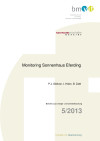
Schriftenreihe
05/2013
P.J. Sölkner, I. Hofer, B. Zettl
Herausgeber: BMVIT
Deutsch, 69 Seiten
Downloads zur Publikation
Erste Passivhaus -Schulsanierung
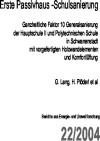
Schriftenreihe
22/2004
DI Hans-Christian Obermayr
Deutsch, 136 Seiten
Downloads zur Publikation
Energieautarker Bezirk Güssing
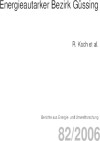
Schriftenreihe
82/2006
R. Koch et al.
Herausgeber: BMVIT
Deutsch, 181 Seiten
Downloads zur Publikation
Supermärkte als Energiezentralen
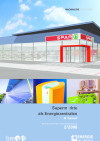
Schriftenreihe
02/2006
M. Peritsch
Deutsch, 442 Seiten
Downloads zur Publikation
Krankenhaus der Zukunft
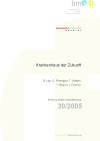
Schriftenreihe
20/2005
B. Lipp, G. Rohregger, T. Waltjen, T. Belazzi, J. Fechner
Deutsch, 174 Seiten
Downloads zur Publikation
Das Ökologische Passivhaus
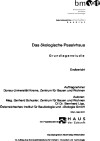
Schriftenreihe
27/2001
G. Schuster, B. Lipp
Deutsch, 174 Seiten
Downloads zur Publikation
Einbringsysteme für Biogasanlagen
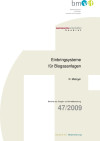
Schriftenreihe
47/2009
R. Metzger
Herausgeber: BMVIT
Deutsch, 44 Seiten
Downloads zur Publikation
PV Power Update
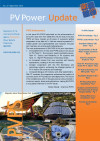
Herausgeber: IEA-PVPS
Englisch, 8 Seiten
